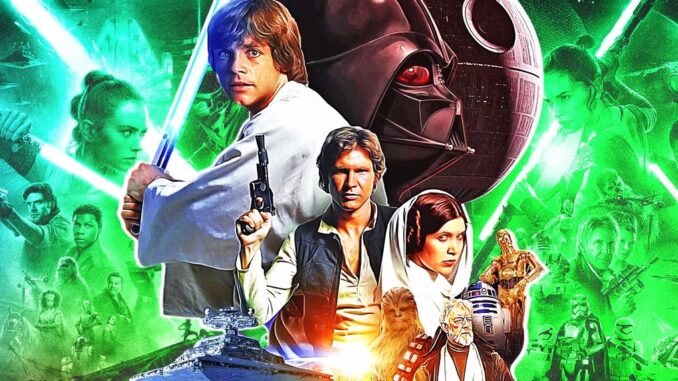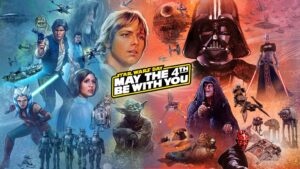
Why Star Wars’ Original Trilogy Heroes Had to Fail In the Sequels
Star Wars fans were disappointed the heroes of the original trilogy failed in the sequel movies, but they had to maintain a crucial narrative theme.

No generational fandom is as difficult to please as Star Wars fans. Despite making a YT-1300 Correllian light freighter-load of money, some fans are deeply disappointed in the sequel trilogy. One reason for the disappointment has nothing to do with the new characters but rather the legacy heroes from films’ past. Yet, allowing the heroes of the original trilogy to fail in the sequels is a necessary continuation of one of Star Wars’ most important themes. Each generation fails to adequately live up to their duty towards the successive one.
Any kid who grew up loving Luke Skywalker, Han Solo and Princess Leia Organa would have loved to see them get together in the sequels to kick some Imperial First Order butt. Instead, they saw Leia as an outcast from the New Republic political apparatus, leading a ragtag resistance against the encroaching threat of a new breed of space fascists. Han Solo went back to doing what he does best: taking on smuggling contracts and failing to deliver the cargo. Luke Skywalker, however, was a mythic figure who’d retreated from the galaxy after his student and nephew, Ben Solo, fell to the dark side of the Force. It was the opposite of what fans expected, and — unlike complaints about Rey’s level of training or Rose Tico’s understanding of the galactic economy — a fair complaint. However, for those who looked beyond the surface of these stories about space wizards and intergalactic senates, it was the only choice the storytellers could’ve made.
Why George Lucas Started the Star Wars Saga In the First Place
The subject of many documentaries and deeply researched books, George Lucas’s motivations for taking to the stars after the success of his film American Graffiti is well known. In the late 1970s, cinema was undergoing a massive shift from the films of its “silver age” and into a new era of gritty, verité stories from Lucas’s peers like Martin Scorsese, Francis Ford Coppola and others. Lucas, however, wanted to create an homage to the Republic film serials he watched as a child. After failing to get the rights to Flash Gordon, he created his own universe in Star Wars.
Still, he wanted to do more than tell a story steeped in classic Jungian mythical traditions that would spark kids’ imaginations and feelings of hopeful aspiration. In The Story of Science Fiction, a series hosted by director James Cameron, Lucas talked about how “come[s] out of anthropology, so [his] focus is social systems.” When Cameron notes how the Rebel Alliance could conceivably be called “terrorists,” Lucas admitted this was intentional. He wanted to draw a line between the “hayseeds in coonskin caps” who beat “the biggest empire in the world,” the British, to the similarities he saw in the Viet Cong fighters battling America in the war of his day.
While Star Trek imagines the perfect system of the future, Star Wars argues that every system or institution will eventually fail the people it is meant to help. From his perspective, the Greatest Generation defeated the authoritarian threat posed by the Axis powers in World War II, only to become a new kind of authoritarian at home. In The Making of Star Wars: The Return of the Jedi by J.W. Rinzler, a transcribed story conference reveals Lucas thought of Emperor Palpatine as Richard M. Nixon. In fact, it could be argued that Lucas’s own generation, the Baby Boomers, failed their children in much the same way. Along with the Force and “good versus evil,” this idea of generational failure is what Star Wars is all about.
How the Prequel Trilogy’s ‘Adults’ Failed Anakin and Padmé’s Generation
In Star Wars: The Phantom Menace, Qui-Gon Jinn, Yoda and the rest of the Jedi Council represent the well-intentioned members of the earlier generation. Anakin, Padmé and even Obi-Wan Kenobi represent the younger generation, ready to take over for their forebears. Only Qui-Gon Jinn understands how the Jedi Order and Republic are failing the galaxy, which is why he had to fall in battle against Darth Maul. He sensed the “vergence” in the Force around Anakin, knowing if he were not trained correctly, he could ruin the already crumbling Republic.
In the next two films, Attack of the Clones and Revenge of the Sith, the corruption of the Jedi and, specifically, Anakin is made complete. Because of old, tired dogma, Anakin has to hide his marriage from his masters. In Episode II, he is plagued by visions of his mother’s torture. In fact, another member of the prior generation, Count Dooku, orchestrated this, according to a cut scene. Anakin goes to Yoda, who does nothing to help him, or this innocent woman left in slavery because the Jedi didn’t want to bother with trying to undo that great evil in the galaxy.
